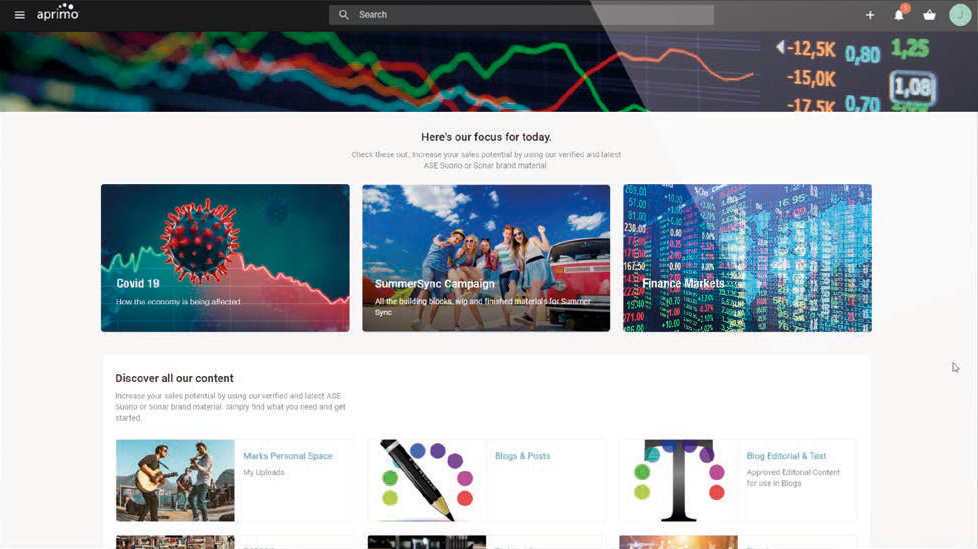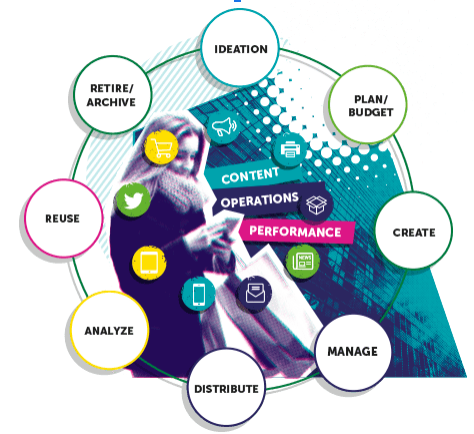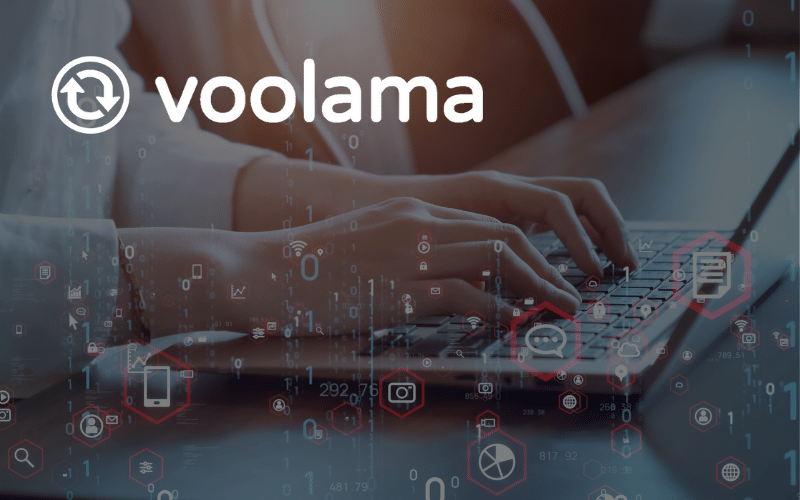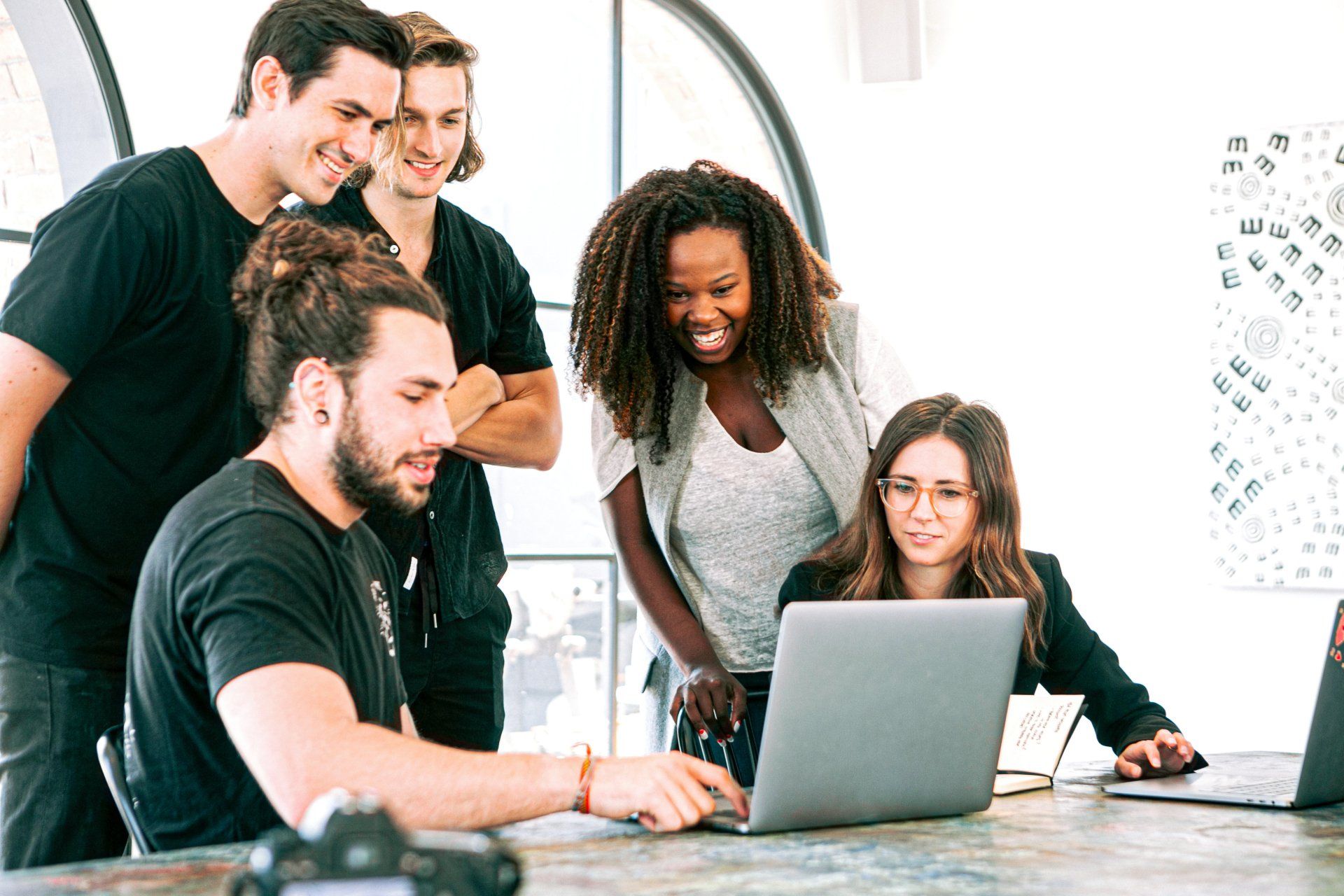What is DAM software and what does it do?
Brands today have complex media needs, driven in part by buyers’ preferences for rich digital content. In fact, infographics and videos rank among the top five types of media that B2B buyers like to consume.
What is DAM software and what does it do?
Some platforms exist that have some similar content features—web content management systems, cross-channel campaign management software, and e-commerce platforms. But only a digital asset management (DAM) platform is optimized to manage the content lifecycle including omnichannel content creation, management, and sharing.

Some platforms exist that have some similar content features—web content management systems, cross-channel campaign management software, and e-commerce platforms. But only a digital asset management (DAM) platform is optimized to manage the content lifecycle including omnichannel content creation, management, and sharing.
The definition of Digital Asset Management
Digital asset management helps teams organize, store, and retrieve rich media while also managing digital rights and permissions. At its simplest, a DAM helps you with managing digital assets across your organization. DAM extends across the entire content lifecycle, from ideation to delivery. Enterprise organizations use DAM to manage assets including videos, animations, infographics, and audio files alongside complex editing tools, rights management, and advanced versioning controls.
A comprehensive digital asset management system definition must also acknowledge the importance of storing contextual elements, like text snippets and product data. Finally, DAM software helps users track digital files throughout the creative workflow. This ensures brand consistency and alignment across media assets, geographies, versions, and channels.
Types of Digital Asset Management Systems
Not all DAM systems are created equal. Different types of digital asset management platforms may emphasize distinct components of the content lifecycle.
Many media asset management systems may differ based on:
- The number and type of media assets they accommodate
- The customization and complexity of reporting
- DAM integration capabilities with creative and content tools
- Data asset management sharing and collaboration functions
- Intended use-case for mid-market vs. enterprise
- Advanced permissions and digital rights management capabilities
Identifying the right DAM solution for your organization means undergoing a detailed analysis of business requirements, user needs, success metrics, and ROI calculation.
Benefits of a Digital Asset Management System: DAM for Marketing & Beyond
For those in the weeds of marketing, the question might be why wouldn’t an organization need digital asset management? Indeed, the benefits of a DAM system extend far past marketing teams to include anyone using—or consuming—branded assets.
Some benefits of using a DAM:
- More consistent branding
- Improved collaboration and asset access
- Structured brand management
- Simple rights management
- Strict asset permissions control
- Improved version controls
- Accurate forecasting and ROI calculation
In the end, a DAM gives you end-to-end control of content assets critical to every line of business and the customer experience.
Who in an organization uses a DAM and how?
Marketing, sales, product managers, line of business leaders—almost everyone in an organization benefits from having accessible, modifiable, and trackable content assets. Here are some of the ways DAM benefits each business unit.
Communications
DAM helps communications teams improve collaboration. It enables centralized review and automated rights management, as well as supporting content across its lifecycle, from the conception of the idea all the way to distribution and reuse.
Creatives
DAM helps ensure creative teams—such as graphic designers and copywriters—have the right logo, boilerplate, or product image when creating content. With DAM, using unapproved content in a campaign is a thing of the past. DAM also enables them to search for and collaborate on content at a single source. This streamlines the creative workflow, as creatives no longer have to post files in different locations or manage different versions.
Ecommerce & Product Teams
DAM helps these groups by integrating with the larger MarTech ecosystem to support product content alongside other marketing content in a single solution, as well as various versions of such content for different regions and languages.
Lines of Business
DAM helps enterprise business teams better understand the ROI of the content their organization distributes through analysis and reporting capabilities.
Marketing
DAM for marketing helps teams improve overall performance and productivity by enabling simple management, scaling, and reuse of content. This improves the team’s agility when responding to evolving customer needs.
Why Do You Need a Digital Asset Management System?
The benefits of a DAM extend across the business. Yet there are other adjacent solutions—ones that focus on a single strategic element—in which your organization may have already invested or is considering.
For example, a content management system (CMS) helps with aspects of digital content publication. Understanding how a DAM is differentiated from these less robust solutions is key to realizing the benefits of end-to-end content lifecycle management.
How do you know if a DAM solution is the right decision for your organization?
A DAM gives you a comprehensive, end-to-end solution to manage the content lifecycle—managing content planning, creation, and distribution from a single place. Only 28% of organizations can or frequently repurpose content without a lot of manual labor. That’s according to the Content Marketing Institute’s 2019 Content Management and Strategy Survey.
Yet repurposing content is a critical component of your marketing strategy, especially when working in a complex enterprise environment. Not only does a DAM help you do this efficiently, but a DAM also ensures the right content gets to the right customer at the right time.
Digital Asset Management Assessment: Determine if DAM is right for Your Organization
1. Is your content siloed in multiple solutions?
Today, brand management and content strategy demands you have different versions of content for your different channels: website, email, marketing, social media, product marketing, etc. At the same time, having different content versions and solutions for each channel can be difficult to manage.
Consolidating all of your content, versions, and content strategy into a DAM enables you to create a library of your content. This makes it easier to find, connect to other content, and better prepare it for distribution.
2. Do you want to do more than just store content?
Content needs nurturing in every stage of its lifecycle, from ideation and planning to analysis and archival. DAM solutions support work-in-progress assets so creative teams can continue to use their tools of choice to develop content. Top DAMs also offer analysis features that give you insight into high-performing content. Update and republish content that works and remove content when it stops performing.
A DAM gives you new capabilities for content development and analysis. It adds efficiency to creative workflows and improving ROI quantification of your overarching content strategy without adding any chaos to the mix.
3. Do you need to support multiple asset types?
Breaking down content—from any format—to segment it and reuse it for different purposes and customer experiences is an essential component of a digital marketing strategy. DAM not only supports multiple asset types, such as video, audio, and images. It also can understand which content is being used most often and by which groups of users. A DAM serves as a single source of truth for all of your brand content, breaking down silos between brand strategists, creatives and marketers and giving them one place to diagnose opportunities to optimize content opportunities.
A marketing DAM supports extensive media assets, including emerging formats. It gives your creative and marketing teams new capabilities that help them deliver the ideal customer experience.
4. Do you have sophisticated content enrichment needs?
Content becomes even more complex when you have to manage it across various versions, regions, dates, rights, and resolutions. DAM offers robust content enrichment capabilities so you get the right content to the right customer at the right time. It also enables customized metadata and taxonomy capabilities to further enrich content. Use this to organize assets by business categories or their components, such as keywords, or other descriptive data.
Digital and data asset management is critical for enterprise-level organizations operating with a complex content marketing strategy—it helps the whole team deliver experiences more efficiently so they land with the most impact on customers.
5. Do many groups need your content?
Content is no longer just for marketing. Other teams including sales, legal, and customer experience all are staking a claim for enterprise content. DAM manages all assets by group or channel so you can allow groups access to only the content they need. Ensure easier findability and control for all of your rich digital assets.
A DAM provides you more control of your digital files, while breaking down silos to help your teams collaborate more effectively.
Why Digital Asset Management is Important
Digital asset management is about helping your team deliver on a complex content marketing strategy. The complexity can come in many different forms, from wide geographic spread to a diverse omnichannel strategy.
Whatever the reason, a DAM gives you increased capabilities around creation, storage, and management of rich media assets.
Digital Asset Management Assessment and Top Features to Look For
As you begin comparing potential digital asset management vendors and platforms, it’s important to identify and examine the DAM features most critical to your enterprise marketing strategy.
Digital Asset Management Functions and DAM Features Worth Considering
Discrete Features. Does the DAM provide:
- Support for the different types and number of assets you create?
- Custom reporting and usage tracking?
- Light and rich content editing?
- Comprehensive taxonomy and digital rights capabilities?
User Needs. Does the DAM:
- Support the various internal teams that interact with content (i.e. marketing, sales, product owners, and creatives)?
- Ensure your customers receive the right content at the right time?
Technology Integrations. Does the DAM integrate easily with key components of your operations?
- The creative tools your team uses?
- Platforms across your MarTech stack?
- Content management systems?
- Content delivery networks?
Vendor Background.
- Is the DAM vendor recognized by independent organizations as a leader in the market?
- Do they offer complementary support and training to ensure your team’s success?
It’s critical you ask the right questions to find the right DAM solution for your business.
Digital Asset Management Pricing
Selecting a DAM requires careful ROI calculation. Assessing digital asset management pricing means you need to examine a number of factors, including:
- Number of Users
- Amount of Required Storage
- Inclusion of Advanced Features
- Brand Recognition
- Implementation Fees
- Critical Customizations
- Associated Services
- DAM Delivery Model
Ensure a DAM delivers the intended value by identifying the quantifiable DAM success metrics that matter most to your needs before calculating ROI.
Find the DAM That’s Right For You
Choosing a DAM solution for managing digital assets may seem complex, but it doesn’t have to be. Start by understanding:
- Why you need a DAM
- The specific benefits you want to offer each of your user groups
- How to calculate your ROI
Then, use a checklist to compare providers against your required capabilities. Enter the DAM selection process prepared to ask the right questions and eliminate wrong-fit solutions.
When optimized for your enterprise, DAM streamlines how you manage and deliver content for marketing, legal, customer service, ecommerce, product, and other business units. It makes you more agile in operations, so you respond comprehensively to evolving customer needs.
DAMs are also continuing to evolve. DAM vendors with a strong reputation are providing solutions with more robust functionality every year. Whatever DAM solution you choose, make sure it grows and scales with your needs. This way, you can continually improve your content management and the experience you deliver in your market.
Ready to explore DAM solutions? Contact us today.
Want More Information?
Get in touch, we would love to spend some time talking about your needs and showing how voolama can provide value.
Contact Us









